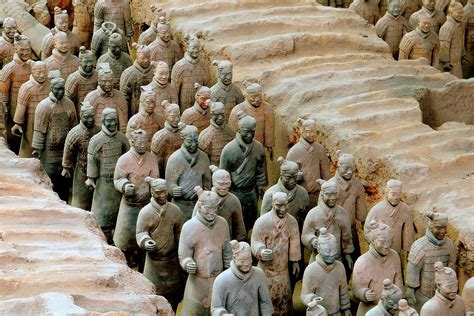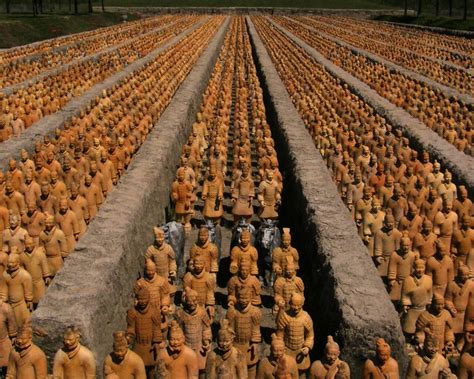china first emperor tomb excavation Learn about the first emperor of China, his opulent tomb complex and the army of clay soldiers that guard it. Find out why the central tomb remains unexcavated and what . Mini Digger Hire – With options ranging from a micro digger at 0.8T to the larger capacity 5.0T mini diggers. We also offer a range of hydraulic attachments to hire such as post drivers & .
0 · where was qin shi huang buried
1 · terracotta warriors official website
2 · terracotta warriors museum official website
3 · terracotta army official website
4 · qin shi huangdi tomb inside
5 · has qin shi huang's tomb been opened
6 · emperor qin shi huangdi tomb
7 · archaeologists are too scared to open up the tomb of china’s first emperor
Mini Digger – rubber tracked and zero swings, mini diggers are a versatile machine. Ranging from 1.5-13 tonne with a multitude of attachments available, our machines are able to provide great assistance for a variety of digging works and concrete breaking.
It appears that the mission of this Terracotta Army was to guard the nearby mausoleum of Qin Shi Huang, the formidable first emperor of the Qin dynasty who ruled from . Learn about the first emperor of China, his opulent tomb complex and the army of clay soldiers that guard it. Find out why the central tomb remains unexcavated and what . Learn the reasons why the underground palace of the First Qin Emperor remains unexcavated, such as limited technology, deep depth, long time, and environmental risk. Find . Qin tomb is the burial place of the first Qin emperor, who unified China and built the Great Wall. It contains a vast underground palace, a terra-cotta army, and other treasures, but the tomb itself remains unexcavated.
Near the unexcavated tomb of Qin Shi Huang —who proclaimed himself first emperor of China in 221 B.C.E.—lay an extraordinary underground treasure: an entire army of .
Archaeologists have unearthed a 16-tonne coffin and a lavish funerary collection at the Terracotta Warrior complex of China’s first emperor. The tomb is likely the burial of Prince . Qin Shi Huangdi (259 BC - 210 BC), the first emperor of China, ascended the throne at the age of 13, when construction of his tomb began. On completion of his many conquests, he ordered 720,000 conscript laborers to . Learn about the burial complex of China's first emperor, Qin Shi Huang, and his terracotta army of 8,000 figures. Discover how the tombs were built, excavated and restored, .
The mausoleum of Qin Shi Huang, the first emperor of the Qin dynasty, is a large tomb complex with a pyramid-shaped mound and a necropolis of terracotta soldiers. It is a UNESCO World Heritage Site and a cultural symbol of ancient China.
It appears that the mission of this Terracotta Army was to guard the nearby mausoleum of Qin Shi Huang, the formidable first emperor of the Qin dynasty who ruled from 221 to 210 BCE.Learn about the discovery and excavation of the massive tomb complex of Qin Shi Huangdi, who declared himself the first emperor of China in 221 B.C.E. See the terracotta warriors, the tumulus, and the underground chambers that reveal his vision of an eternal empire. Learn about the first emperor of China, his opulent tomb complex and the army of clay soldiers that guard it. Find out why the central tomb remains unexcavated and what mysteries it may reveal. Learn the reasons why the underground palace of the First Qin Emperor remains unexcavated, such as limited technology, deep depth, long time, and environmental risk. Find out what is buried inside the mausoleum and how to visit the terracotta warriors pits.
Qin tomb is the burial place of the first Qin emperor, who unified China and built the Great Wall. It contains a vast underground palace, a terra-cotta army, and other treasures, but the tomb itself remains unexcavated. Near the unexcavated tomb of Qin Shi Huang —who proclaimed himself first emperor of China in 221 B.C.E.—lay an extraordinary underground treasure: an entire army of life-size terra-cotta. Archaeologists have unearthed a 16-tonne coffin and a lavish funerary collection at the Terracotta Warrior complex of China’s first emperor. The tomb is likely the burial of Prince Gao, one of 50 children of Qin Shi Huang, who unified China in 221 BC. Qin Shi Huangdi (259 BC - 210 BC), the first emperor of China, ascended the throne at the age of 13, when construction of his tomb began. On completion of his many conquests, he ordered 720,000 conscript laborers to hurry up on building his royal tomb.
Learn about the burial complex of China's first emperor, Qin Shi Huang, and his terracotta army of 8,000 figures. Discover how the tombs were built, excavated and restored, and why they are a.
where was qin shi huang buried
terracotta warriors official website


The mausoleum of Qin Shi Huang, the first emperor of the Qin dynasty, is a large tomb complex with a pyramid-shaped mound and a necropolis of terracotta soldiers. It is a UNESCO World Heritage Site and a cultural symbol of ancient China.
It appears that the mission of this Terracotta Army was to guard the nearby mausoleum of Qin Shi Huang, the formidable first emperor of the Qin dynasty who ruled from 221 to 210 BCE.
Learn about the discovery and excavation of the massive tomb complex of Qin Shi Huangdi, who declared himself the first emperor of China in 221 B.C.E. See the terracotta warriors, the tumulus, and the underground chambers that reveal his vision of an eternal empire.
Learn about the first emperor of China, his opulent tomb complex and the army of clay soldiers that guard it. Find out why the central tomb remains unexcavated and what mysteries it may reveal.
Learn the reasons why the underground palace of the First Qin Emperor remains unexcavated, such as limited technology, deep depth, long time, and environmental risk. Find out what is buried inside the mausoleum and how to visit the terracotta warriors pits. Qin tomb is the burial place of the first Qin emperor, who unified China and built the Great Wall. It contains a vast underground palace, a terra-cotta army, and other treasures, but the tomb itself remains unexcavated. Near the unexcavated tomb of Qin Shi Huang —who proclaimed himself first emperor of China in 221 B.C.E.—lay an extraordinary underground treasure: an entire army of life-size terra-cotta. Archaeologists have unearthed a 16-tonne coffin and a lavish funerary collection at the Terracotta Warrior complex of China’s first emperor. The tomb is likely the burial of Prince Gao, one of 50 children of Qin Shi Huang, who unified China in 221 BC.
Qin Shi Huangdi (259 BC - 210 BC), the first emperor of China, ascended the throne at the age of 13, when construction of his tomb began. On completion of his many conquests, he ordered 720,000 conscript laborers to hurry up on building his royal tomb.

terracotta warriors museum official website
terracotta army official website
Find One Man & His Digger on Yell. Get contact details, photos and opening times. Search for Plant & Machinery Hire near you and submit reviews.
china first emperor tomb excavation|terracotta warriors official website